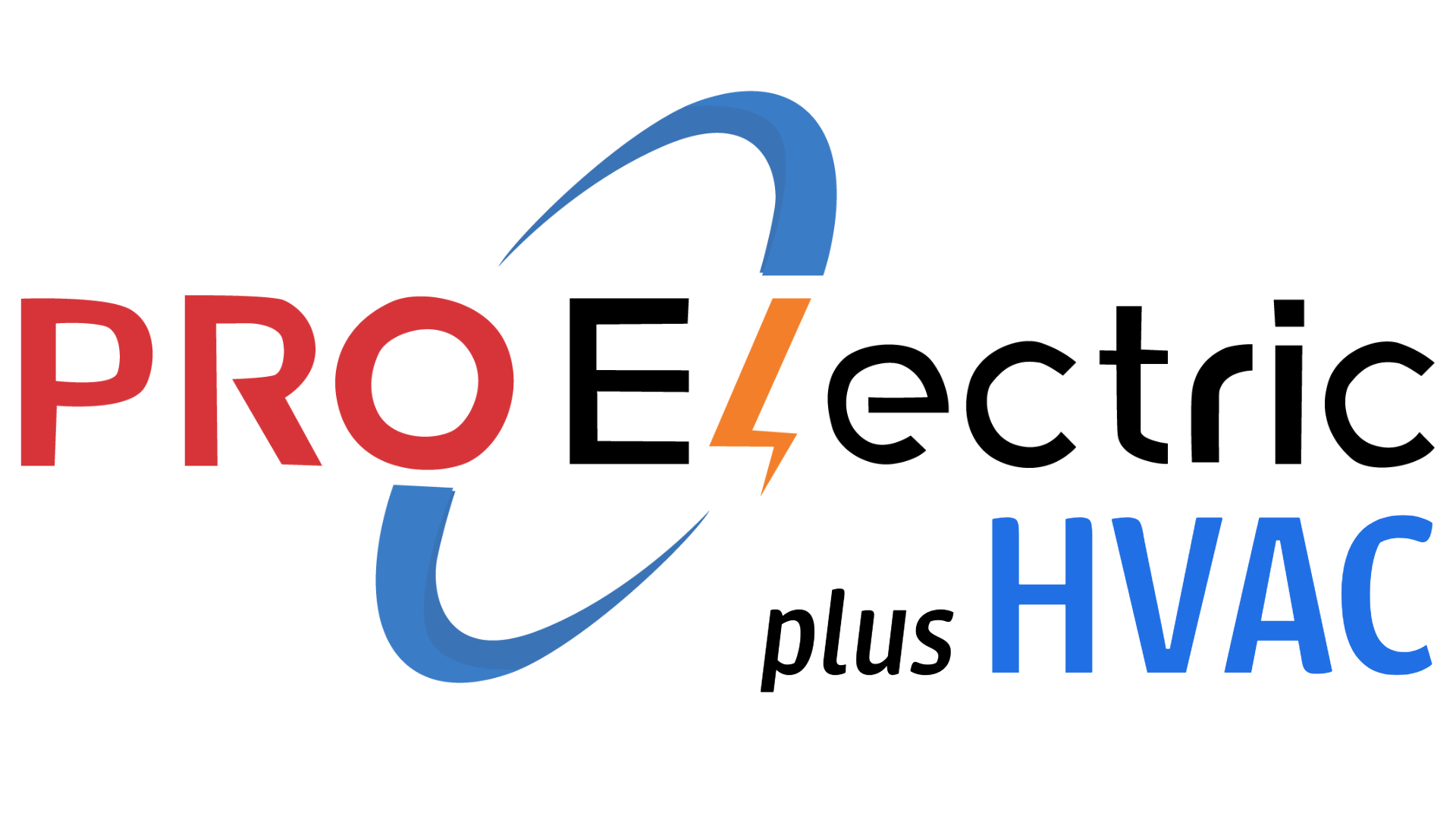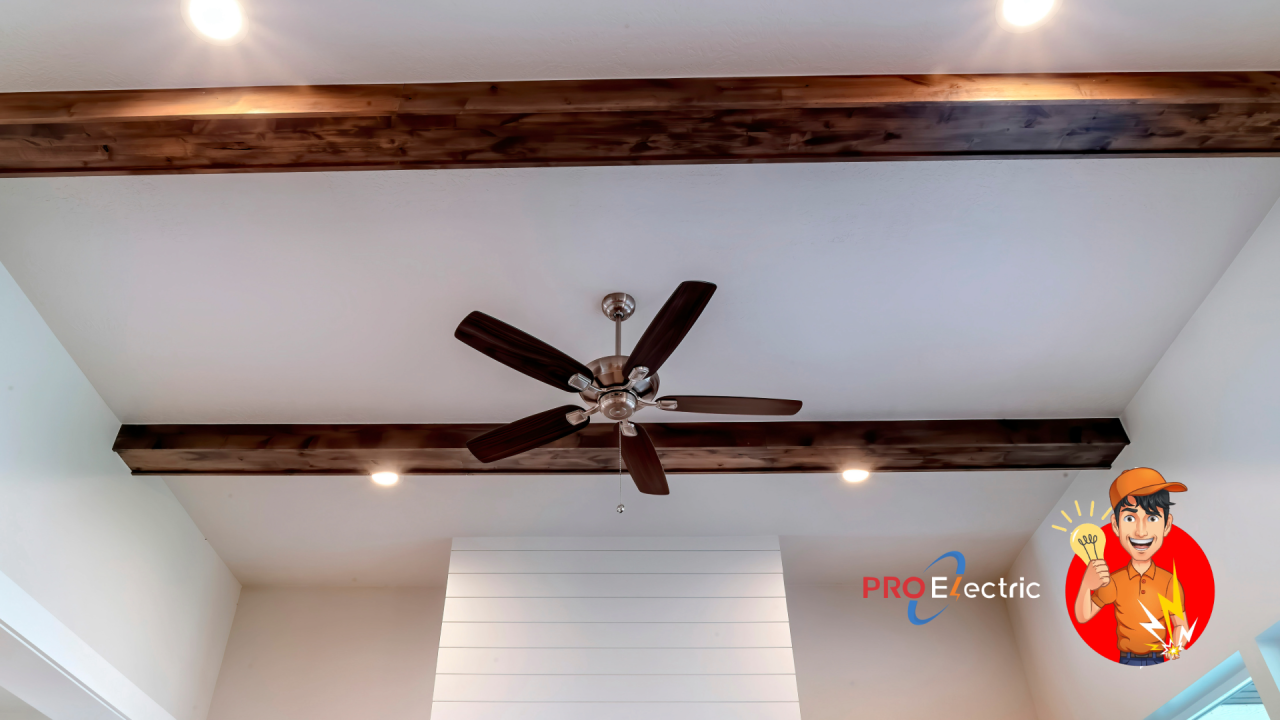Ceiling Fan Installation Guide by PRO Electric LLC, Northern Virginia
Setting up a ceiling fan might seem easy, but various things must be considered to ensure safety and efficiency.
Having been a Master Electrician in Northern Virginia for quite some time now, I have encountered many queries from homeowners regarding installing ceiling fans.
Below are responses to commonly asked questions that will help you make informed decisions about installing them in your house.
1. How Do I Install a Ceiling Fan?
Installing a ceiling fan involves several steps, including securing the mounting bracket, wiring the fan, and attaching the blades.
Though it may seem simple, it is essential to follow all safety measures, especially when working with electrical connections.
When fitted correctly, the fan functions well without shaking or falling off.
2. What Tools Are Needed to Install a Ceiling Fan?
To install these fans, one requires essential tools such as screwdriver sets, pliers sets, a ladder (preferably long enough), and a voltage tester, depending on what needs fixing.
One must have all the required tools to do their job safely and successfully.
3. Can I Replace a Light Fixture with a Ceiling Fan?
Yes, it is possible to replace light fixtures with ceiling fans.
However, you must ensure the electrical box is rated for supporting the fan’s weight and movement.
Typically, standard boxes for fixing lights are not strong enough, so replacing them becomes inevitable.
4. How Do I Wire a Ceiling Fan?
Wiring involves connecting wires based on their colors or uses. For example, black(hot) wire connects with black wire, white(neutral) wire connects with white wire, and green/copper(grounding) wires connect.
If a light is attached to the fan kit, there might be an extra wire.
Proper wiring prevents electrical accidents and ensures that fun runs as expected.
5. Do I Need an Electrician to Install a Ceiling Fan?
Although some people can comfortably handle do-it-yourself projects at home, hiring professional electricians is always the best option for ceiling fan installation, especially if new wires need to be fixed or a light fixture needs to be replaced.
They help ensure everything meets safety standards, mount fans securely, and do the correct wiring.
6. How Do I Balance a Ceiling Fan?
It must be balanced if your ceiling fan is unbalanced and wobbles while operating.
One can do this by either adjusting blade angles, tightening screws, or using a balancing kit which consists of weights that can be attached to blades to make them rotate evenly.
When the fun is balanced well, it spins quietly and works efficiently.
7. What Size Ceiling Fan Do I Need?
The size of the ceiling fan should match the room’s size.
For small rooms up to seventy-five square feet, you will require one with a blade span of twenty-nine to thirty-six inches, whereas bigger ones may need those with fifty-two inches or even more blade spans since larger areas need more air circulation, which is achieved through large fans like these ones.
8. How Much Money I Spend For A Ceiling Fan Installation?
The ceiling fan installation cost can vary depending on the complexity and whether any other electrical work is required.
A basic set-up in Northern Virginia will cost upwards to a few hundred dollars.
But if it’s more complex, like new wiring or mounting on sloped ceilings, expect to pay higher.
9. Can You Put A Ceiling Fan On A Sloped Ceiling?
Ceiling fans can be installed on sloped ceilings using an angled mounting kit that allows the fan to hang level despite the angle of the roof so that it works properly and efficiently.
Fans must be compatible with sloped ceiling installations, which should be verified by checking their specifications.
10. What Kind Of Electrical Box Do I Need For A Ceiling Fan?
Fan-rated electrical boxes are necessary for ceiling fans because they are designed to hold heavier weight and withstand more movement than typical ones.
These boxes are generally made of metal and must be anchored either directly onto or into a joist to prevent them from moving around.
If not done correctly, this could potentially lead to unsafe conditions later on down the line.
11. How To Install A Ceiling Fan With Remote Control?
To install a ceiling fan with a remote control, wire up your receiver into the wiring of your fan, typically located inside its canopy, while connecting both house wiring as well as motor wires coming from different sides too; once this is done, instead of using a wall switch (which won’t work) you’ll use handheld device which sends signals via radio waves thus allowing you change speed levels even turn lights off/on without physically being near them at all times.
12. What Is The Best Height To Hang A Ceiling Fan?
The best height for hanging an overhead fan is usually between eight feet minimum and nine feet maximum above floor level; such positioning ensures enough space between the head and blades to let air circulate freely without compromising safety measures.
13. How Do I Put A Ceiling Fan Where No Wiring Exists?
Putting up a ceiling fan in areas lacking pre-existing wiring involves running new electrical wires from the breaker panel onto where the fan will be situated; however, such a task can be quite intricate and usually requires professional electricians who are well-versed in local codes and regulations concerning such installations to avoid any hazards associated with shoddy workmanship later on.
14. Can You Use A Ceiling Fan Outdoors?
Yes, but only if it’s rated for outdoor use; otherwise, it is not recommended because regular fans cannot withstand moisture or humidity levels found outside and hence might get damaged easily when exposed to rain, mainly if located at places like patios under awnings, etc. where they’re likely to come into direct contact with water droplets frequently during wet conditions throughout the year.
15. What To Do When My Ceiling Fan Won’t Work?
If your ceiling fan isn’t working, start by checking circuit breakers for power supply issues.
Afterward, inspect connections within its wiring system.
If everything seems fine yet still doesn’t respond, then there could be a motor problem and capacitor failure, too, which needs expert attention from experienced electricians who can diagnose further what might have caused this malfunctioning to occur.
Inference
A ceiling fan can significantly improve a house’s comfort; even so, it must be done accurately and by a professional. Our team of experts at PRO Electric LLC has been in the electrical industry for several years; hence, we will install your ceiling fan safely, quickly, and within compliance with all standards.
We can offer any assistance, whether changing an outdated fixture or mounting one in another place.
Contact us now if you want skilled Northern Virginia ceiling fan installation services.


